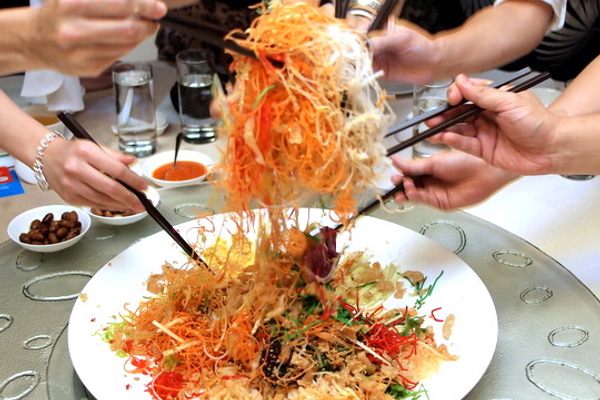When clocks strike midnight on New Year’s Eve in Spain and parts of Latin America, many revelers are too busy to pop champagne, set off fireworks, or kiss their spouse. Instead, they’re stuffing 12 green grapes in their mouths—an attempt to ward off bad luck in the new year.
A common story traces the tradition of the twelve lucky grapes, or uvas de la suerte, to grape farmers in Alicante, Spain, who cannily suggested the idea when they had a surplus harvest to unload in the early 1900s. But according to food writer Jeff Koehler, newspaper articles about the tradition from the 1880s suggest it developed from Madrid’s bourgeoisie copying the French custom of drinking champagne and eating grapes on New Year’s Eve.
Either way, Spanish tradition eventually became a superstition that spread to Central and South America. Eating one grape at each of midnight’s 12 clock chimes guarantees you a lucky year—if and only if you simultaneously ruminate on their significance. (Each grape represents an upcoming month.) If you fail to conscientiously finish your grapes by the time the clock stops chiming, you’ll face misfortune in the new year.
Superstitions tend to be specific, and uvas de la suerte is no different. Most Spaniards eat white Aledo grapes, which farmers in Alicante, Spain, protect from the sun, birds, and other pests by tying paper bags around as they grow. This process, which slows the grapes’ development and allows them to grow a finer skin, produces a grape that’s soft, ripe, and ready to be sold in twelve-packs in December. Now isn’t that lucky?
Written By
 paulamejia
paulamejia
Sources
- www.npr.org/sections/thesalt/2012/12/26/168092673/green-grapes-and-red-underwear-a-spanish-new-years-eve
- www.bbc.com/mundo/noticias-america-latina-38374437
- www.foodrepublic.com/2012/12/28/12-grapes-at-midnight-spains-great-new-years-eve-tradition-and-superstition/
- blogs.cornell.edu/agsci-interns/2013/07/23/embolsando-grape-bagging/
- www.npr.org/sections/thesalt/2016/12/27/506484561/in-spain-new-year-s-eve-is-all-about-the-grapes-save-the-bubbly-for-later
















